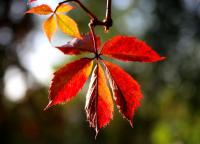Вы здесь
Riparian woodland in Central Asia.



Bird-watching tour in Kazakhstan & Kyrgyzstan.
“It is not the strongest of the species that survive, nor the most intelligent, but the one most responsive to change”
Charles Darwin.
Hiking around Bishkek.
Riparian woodland in Central Asia is called woody scrubland floodplains. The peculiarity of Central Asian floodplain landscapes suggests that the landscapes are floodplains with a pronounced zonal imprint. Significant differences can be noted even between the floodplains of the northern and southern desert zones of Central Asia.
Riparian woodland landscapes develop in optimal soil moisture conditions, which are created by river water spills and groundwater levels close to the surface, saturating alluvial deposits of flood plains. In the modern river valleys and deltas of Central Asian rivers, alluvial meadow, bog meadow and bog soils are developed.
Actually Riparian woodland landscapes are confined to alluvial meadow soils, in conditions of excessive moisture they occur in marsh landscapes. Meadow saline land landscapes are also widespread in floodplains.
Marsh meadow and marsh soils of floodplains and deltas are also almost universally saline. Alluvial meadow soils of Riparian woodland are characterized by a high degree of carbonate, salinity, low humus content (up to 1 - 2%).
Typical Riparian woodland are dense thickets of deciduous trees and shrubs. In the south of Central Asia, they are dominated by poplars - Turanga (Populus diversifolia), (P. pruinosa), (Elaeagnus angustifolia), various types of willows, (Halimodendron halodendron).
Trees and shrubs are often covered with lianas. In addition to grassy vines (bindweed), clematis (Clematis orientalis) is a widespread species - a liana with a woody stem. Among the trees in more humid habitats, cattails and reeds often grow, in the southern Amudarya Riparian woodland reaching three meters in height.
In less typical Riparian woodland, especially in areas that have been cut down, reed beds and meadows of couch grass, licorice, etc., which are mixed with woody shrub vegetation, dominate the landscape. Under reed beds thickets of meadow swamps are developed, with constant excessive moisture, swamp soils.
In areas with stagnant moistening as a result of salts from below, saline processes develop during evaporation and typical Riparian woodland are replaced with a predominance of salts of resistant shrubs. The bushes are depressed here, the reed also becomes short and sparse.
Shrub - Kalidium caspicum and grassy forms of Salsola saltworms appear. In the northern desert zone of Central Asia, on the Chu River and in Balkhash (Seven Rivers), in addition to willow, Riparian woodland includes hawthorn, wild rose, barberry, and poplars are characteristic only of southern Riparian woodland.
Riparian woodland thickets are a very special habitat for animals, distinctly different from the surrounding deserts. Wild boars, hares, Riparian woodland deer (Cervus elaphus bactrianus), jackal (Canis aureus), rush cat (Felis chaus), pheasants are found in them.
In the Riparian woodland of the Amudarya and Ili basins, a Turkestan tiger (Felis tigris virgata) has recently met. Riparian woodland is common in the floodplains and deltas of the Amu Darya, Syr Darya, Churek, Balkhash, Murghab, Tejen, in the lower parts of the ancient Zeravshan deltas, and Kashkadarya.
Authority:
N. A. Gvozdetsky, N. I. Mikhaylov. "Physical geography of the USSR. Asian part. The edition third corrected and added. Moscow "Thought" of 1978. http://tapemark.narod.ru/geograf/1_5_5.html
Photos by
Alexander Petrov.







